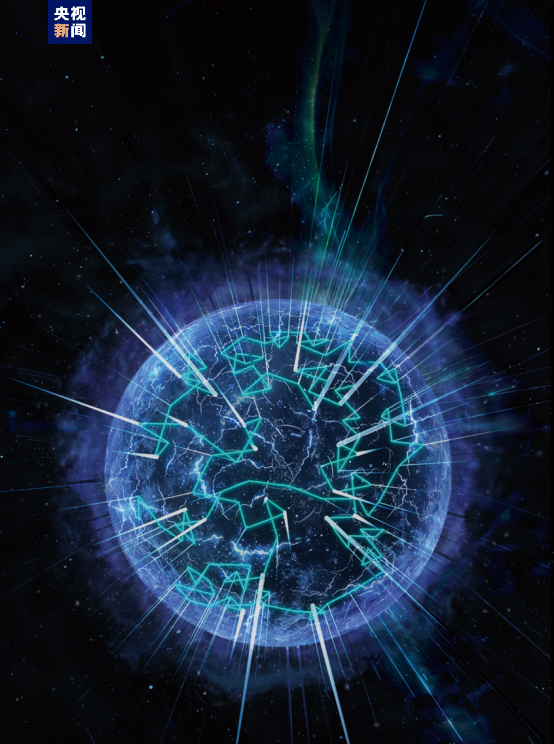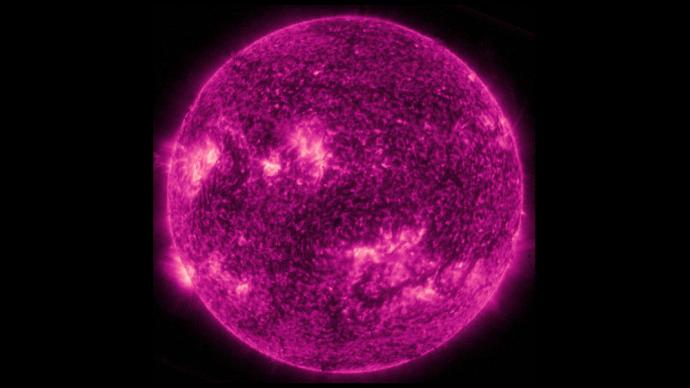
The reporter learned from the National Astronomical Observatory of the Chinese Academy of Sciences that using the rich data of China Sky Eye FAST, researcher Li Ge of the National Astronomical Observatory of the Chinese Academy of Sciences led a team to propose a new analysis framework "Pincus-Lyaponov phase diagram" to quantify the randomness and chaos of explosive events. , revealed that the time-energy performance of fast radio bursts is essentially different from earthquakes and solar flares. This difference challenges the starquake origin of fast radio bursts. Based on the new phase diagram, the team found that fast radio bursts travel in the time-energy binary space close to the so-called Brownian motion, which means they exhibit a high degree of randomness. However, equally unpredictable earthquakes, solar flares, etc. show far more significant chaos. The high degree of randomness of fast radio bursts may be caused by multiple mechanisms or a combination of multiple emission locations. China Sky Eye Through the powerful observation capabilities of China Sky Eye FAST combined with innovative analysis methods, scientists in the future may be able to deeply characterize the mysterious burst signals in the universe, and are expected to eventually reveal the origin of the universe. This research work was published as a cover article in the comprehensive journal "Science Bulletin" of the "China Science and Technology Journal Excellence Action Plan" on April 12, 2024, Beijing time.

Fast Radio Bursts (FRBs) are short and intense bursts of radio waves coming from the depths of the universe. As its name suggests, fast radio bursts can release huge amounts of energy in a thousandth of a second, enough to drive human society for trillions of years. Since the fast radio burst was first discovered in 2007, it has attracted the attention of scientists around the world because of its mystery and power, and won the Shaw Prize in Astronomy in 2023. But so far, we don't know how these powerful energies are generated, and solving such mysteries could help us make major breakthroughs in astronomy and even fundamental physics.
Although it is not yet known exactly how fast radio bursts are emitted, it can at least be speculated that their source is some so-called compact object containing extremely high energy density, such as a neutron star or a black hole. We know that the signal from a neutron star will be like a lighthouse, sweeping across the earth regularly and very stably. If fast radio bursts are also emitted by such celestial bodies, can we see regular fast radio burst signals? It is very regrettable that in many past studies, all efforts to find the period of fast radio bursts on the order of milliseconds to seconds have failed. This requires us to rethink the way fast radio bursts are emitted.
Celestial bodies also undergo unpredictable and seemingly chaotic energy release processes, such as starquakes and earthquakes. The starquakes of compact objects, especially magnetars with extreme magnetic fields, are considered to be possible triggering mechanisms for fast radio bursts. Earthquake chaos is unpredictable, but not entirely random. A very strong earthquake event is often followed by more relatively weak aftershocks. This shows that the time and energy of earthquakes are related and are not completely random. Previous periodic searches have failed to reveal the connection between the two fundamental physical parameters of time and energy.
The unpredictability of a random event, such as a coin toss, is stable and continuous. We cannot predict the next time or the result of the next time based on the current positive and negative results. In contrast, a chaotic system, such as climate, appears chaotic as a random process, but its unpredictability grows over time. Just look up at the sky and you can predict the weather in the next second. But even the best forecasting systems in the world cannot accurately predict the weather weeks or months ahead. Higher inaccuracies over longer periods of time are characteristic of chaotic systems.
